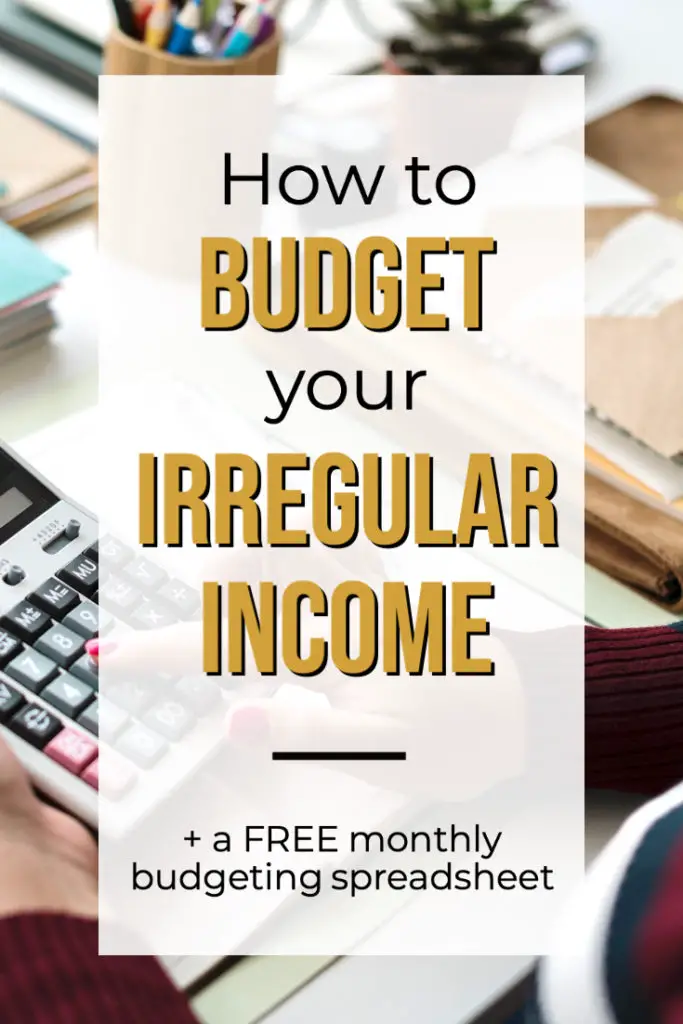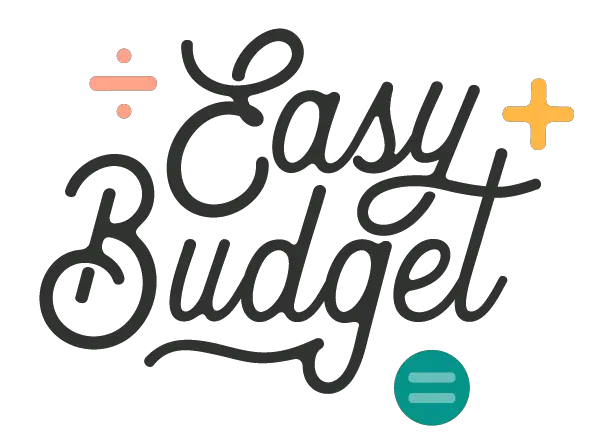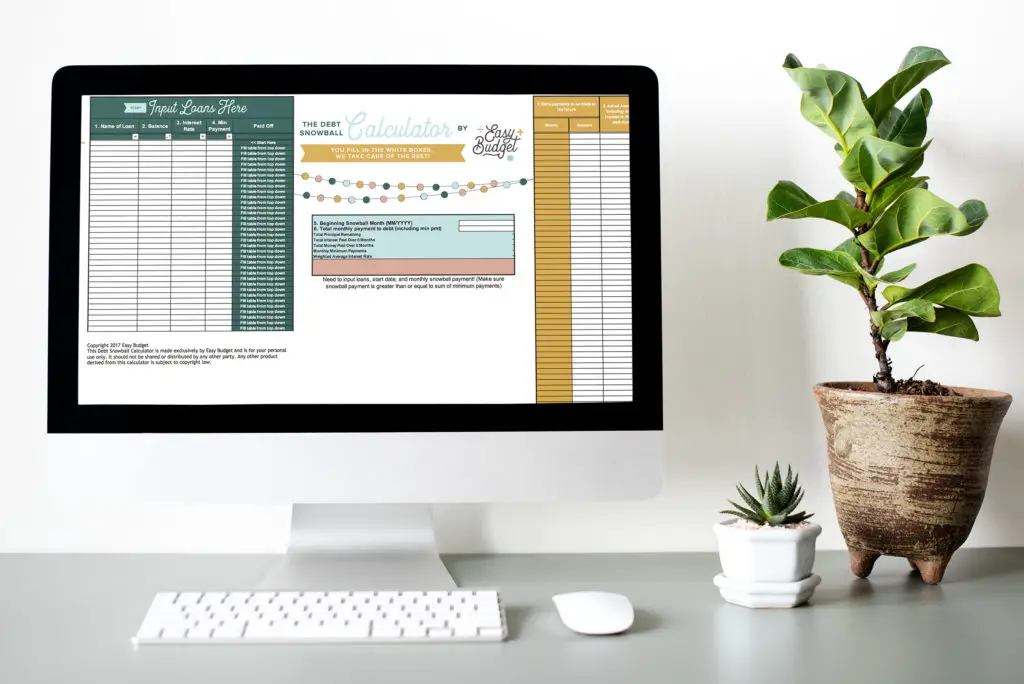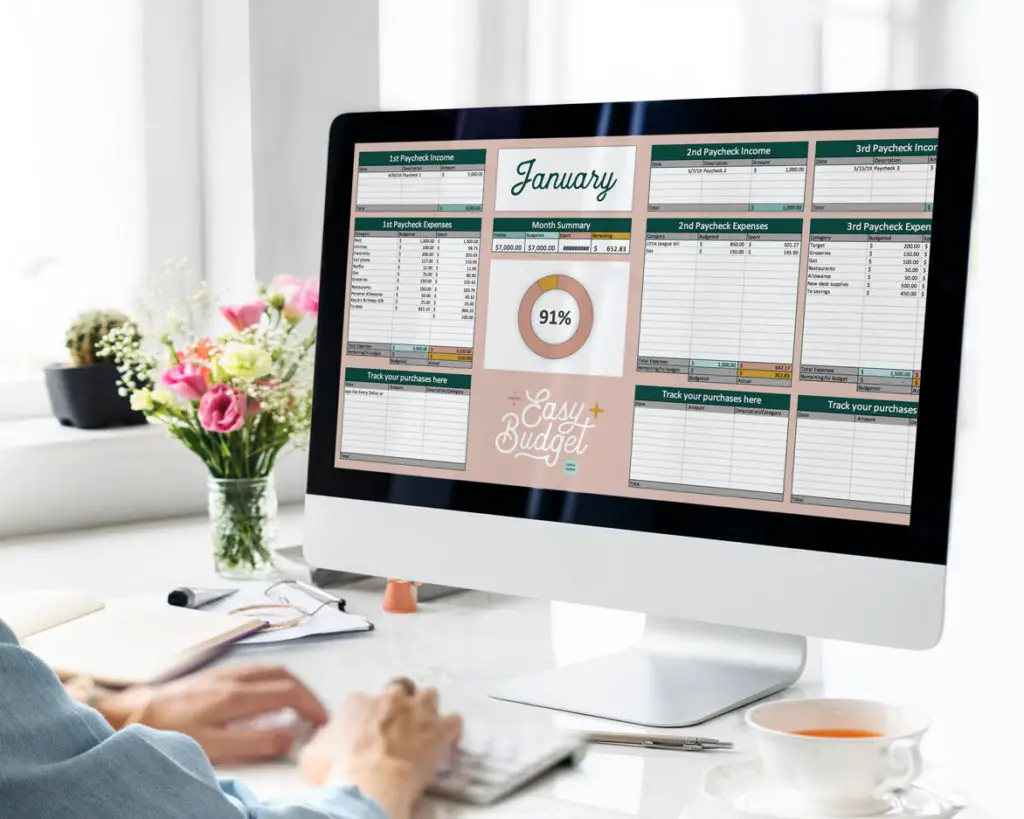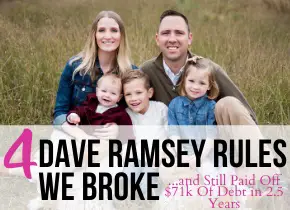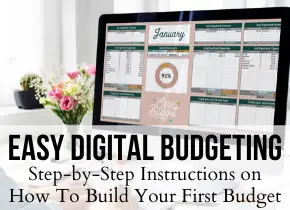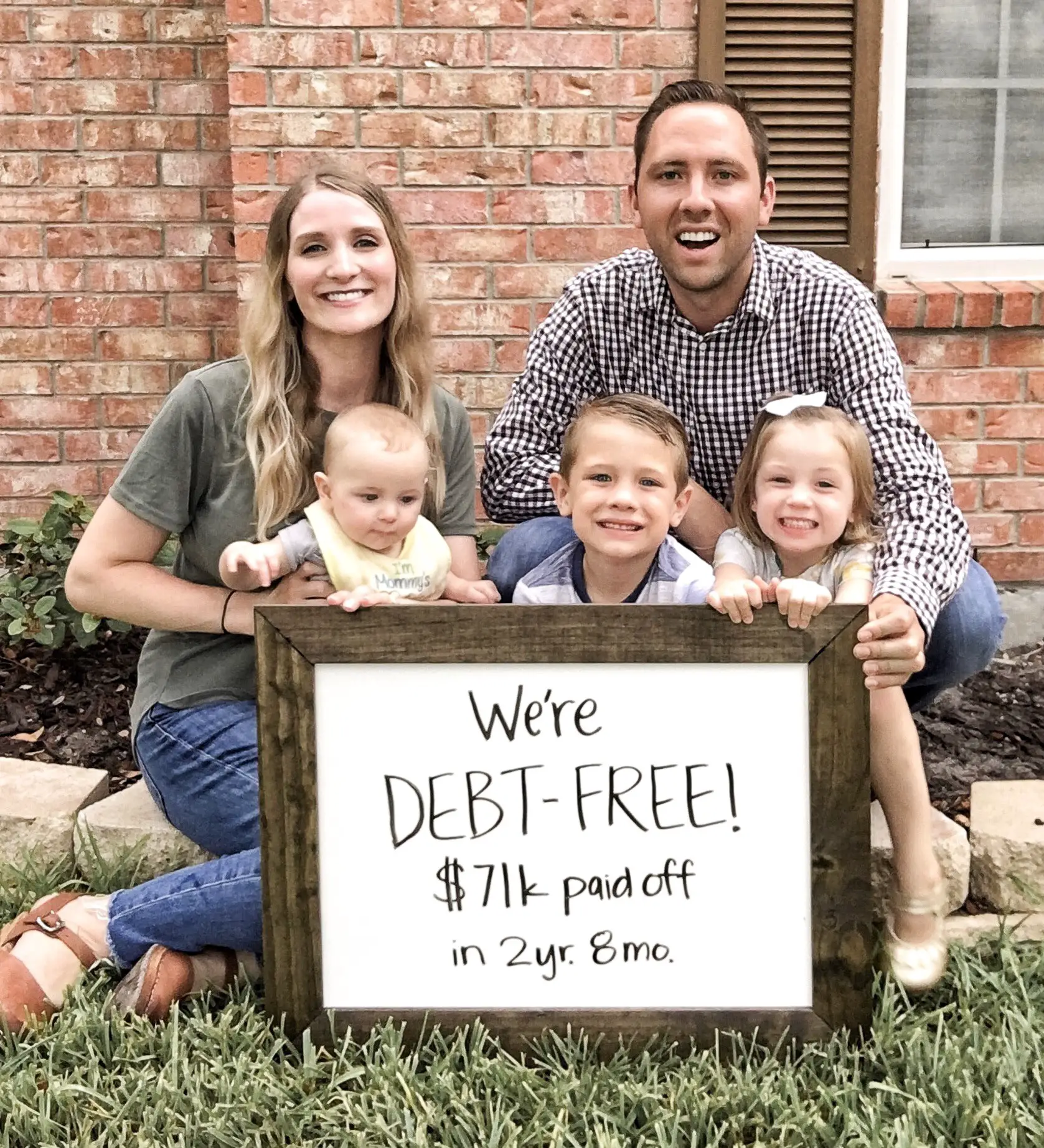This post may contain affiliate links where I earn a commission, at no additional cost to you, if you decide to make a purchase after clicking on a link. Please see our Disclosure Policy for full details. Thank you for your support!
You can still be a consistent and solid budgeter even if your income is all over the place! Today, I’m going to show you how to budget your irregular income and make it solid.
First of all, you can still use all the same tools to build your budget as everyone else, such as my free digital budgeting spreadsheet which you can grab here. The way you move your money around and the timing will just be slightly different.
If you have only a slightly irregular income, you can probably get away with simply living on the smallest income you tend to make. Plan your whole budget around that smaller amount of income, and any month where it is higher, send that extra money straight toward your main goal (debt, savings, sinking funds, etc.). Work hard to cut your budget back to a place where all your monthly essentials can be covered with that lower income amount, and then the extra money on your higher earning months can just be gravy.
If you make two incomes and can live off of the one more stable income, you can use the second more variable income to work toward bigger goals, like paying off debt, saving for a new car, etc.
If you have very irregular income and you are reliant on it to meet your family’s needs, that isn’t going to cut it! Super irregular income is common for those of us who are self-employed or work a commission based job that causes income to fluctuate. Some months you may earn $10,000 when you land a huge sale, and other months you’re scraping by with a $2000 paycheck. For you, Hills and Valleys Budgeting is going to become your best friend.
Let’s go over how to budget your very irregular income using this method and make it so solid and indestructible that you never have to touch a credit card again!

How to Create a Hills and Valleys Budget for Irregular Income
Let’s go over the steps to create a solid budget that works with very irregular income.
Set up a separate savings account
First, you will want to set up a bank savings account that is set aside for your Hills and Valleys budget. You could use your regular checking account, but I don’t recommend it. Having a specific bank account set aside for this will make all the difference in this method actually being functional and practical. I recommend this be a savings account at the same bank where you have your main checking account.
Determine your average income and lowest possible monthly budget amount
Next, you need to figure out what your lowest possible monthly budget amount is. This needs to cover the “four walls” of your budget: food, housing + utilities, transportation, and clothing (only essential clothing) and all essential bills like minimum payments on any debts that you have. This shouldn’t include many wants or non-essentials (but don’t worry you can add those in later!).
To get this number, go through the last 3-6 months of your bank records and add up your essential spending. Figure out the average for each month. This may take some time, but you’ll be really glad you did it.
Next, use this same strategy to review your past income and estimate your future income. Review the last 6-12 months of income and calculate the average for each month. This number can help you determine about how much money you have to work with in your budget, and how your spending compares to your income over time.
Ideally, the average income you make should be more than the lowest possible amount you need to get by. If not, you’ll likely need to cut back your spending or make more money.
After you figure out what that lowest possible amount you need to get by is (on average), and what your average income is, you’re ready to set up your hills and valleys budget.
Save money from your “hills” to cover your “valleys”
Whenever you have a “hills” month, or a high income earning month, only budget and spend what is required in your “lowest possible monthly budget” amount. Anything extra needs to be sent to your Hills and Valleys savings account. Use this money to cover your lower earning months when they come in the future.
Example 1
Say your income fluctuates from $3,000-$10,000/mo. You determine that the minimum amount your family needs each month is $4000. On the low months where you only earn $3000, your income doesn’t cover all your expenses. In the past you may have used credit cards to fill that gap, and then paid them off when you had a high earning month in the future if all the stars aligned. Now you’re going to prepare for that ahead of time.
Next time you get paid $10,000, you’re going to budget $4,000 of it for the current month to cover all of your basic expenses and send the other $6,000 to your Hills and Valleys savings account. Then when you have a lower earning month, say $3,000, you’ll withdraw $1,000 from your savings account to cover the amount you are short in this month’s earnings.
Remember…
After money is placed in your Hills and Valleys savings account, you should not spend it unless it’s to cover budgeted expenses in a future month where your income is low. Any month you make more than the minimum amount needed to cover your basic expenses, you should place the extra money in your savings account to prepare for future lower earning months.
Let me give another example with a little bit slimmer and more realistic numbers.
Example 2
Say your income fluctuates between $2000-$5000/mo, and the minimum amount your family needs is $3500/mo. It may take you a little bit longer in this scenario to get your Hills and Valleys account to a place where it’s actually helping, but you just have to put in the work to get there even if it takes diligence and some trial and error at the beginning. Here’s how you can work that out.
Month 1
- Earn $5000
- Spend $3500
- Save $1500 into Hills and Valleys savings account
Savings balance: $1500
Month 2
- Earn $4000
- Spend $3500
- Save $500 into Hills and Valleys savings account
Savings balance: $2000
Month 3
- Earn $2000
- Withdraw $1500 from savings account
- Spend $3500
Savings balance: $500
Repeat! Obviously, in real life, this will probably be a lot messier and more complicated. You don’t know the future and could experience unexpected low income months, and real expenses tend to fluctuate each month. Do the best you can and commit to keeping your spending low on the higher earning months so that you are prepared for the lower income months. This does require a great deal of discipline and planning, but I believe in you and you can do it! The first few months will definitely be the hardest.
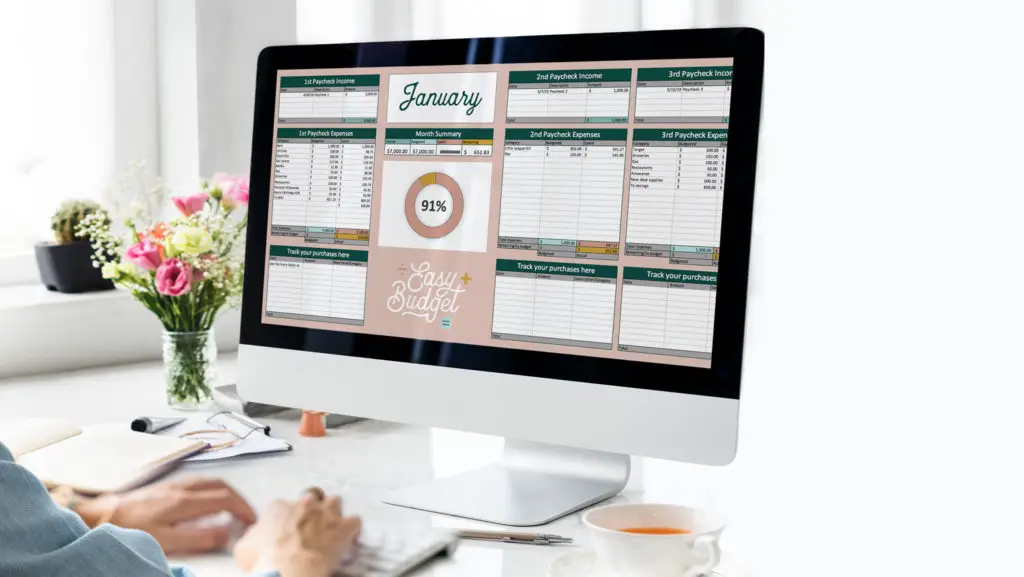
When to increase your budget or start paying off debt
After you have been doing this for a while, you will start to see some patterns. You will get to a place where you can predict your future income better and have a little savings account cushion. Then, you will be able to increase your monthly budget to include some more wants or start throwing some money at debt or other big goals. Until then, especially at the beginning of getting a handle on this type of budgeting, it’s best to cut back and keep your budget pretty bare bones.
Increase your income, if needed
Still worried this isn’t going to work for you? You may want to increase your income a little bit! This will help you build up some savings or cover some of your monthly expenses. Check out my Side Hustle Guide for 60+ great ways to earn extra money! A little extra income can go a long way when the paychecks you rely on are irregular.
Make sure you have a separate Emergency Fund
Make sure that you have an Emergency Fund in place as well, of at least $1,000-$5,000. This can take some time to build up, but it is absolutely worth it. This should be completely separate from your Hills and Valleys savings account.
How Much Money Should I Keep in My Emergency Fund While Paying Off Debt?
Okay but how do I actually make a budget?
If you understand how Hills an Valleys budgeting could work for you now, but you still don’t even know where to start with getting a physical budget set up and ready to go, hop on over to my Easy Digital Budgeting page where I break down how to get a zero-based budget built + a FREE spreadsheet you can use! Everything there will work perfectly with this method.
Stick with it!
Remember, nobody is learning to budget on an irregular income (or even regular income) instantly. These things take time and patience to master. Your methods may always be changing and evolving. You don’t have to be perfect at it today, just start! This is the best way to make budgeting work on an irregular income. Keep playing with it to figure out how to make it work with your numbers and don’t give up!
I hope you found this helpful and feel prepared to start budgeting your irregular income!
Did you enjoy this post? Save it to your Pinterest for later!
